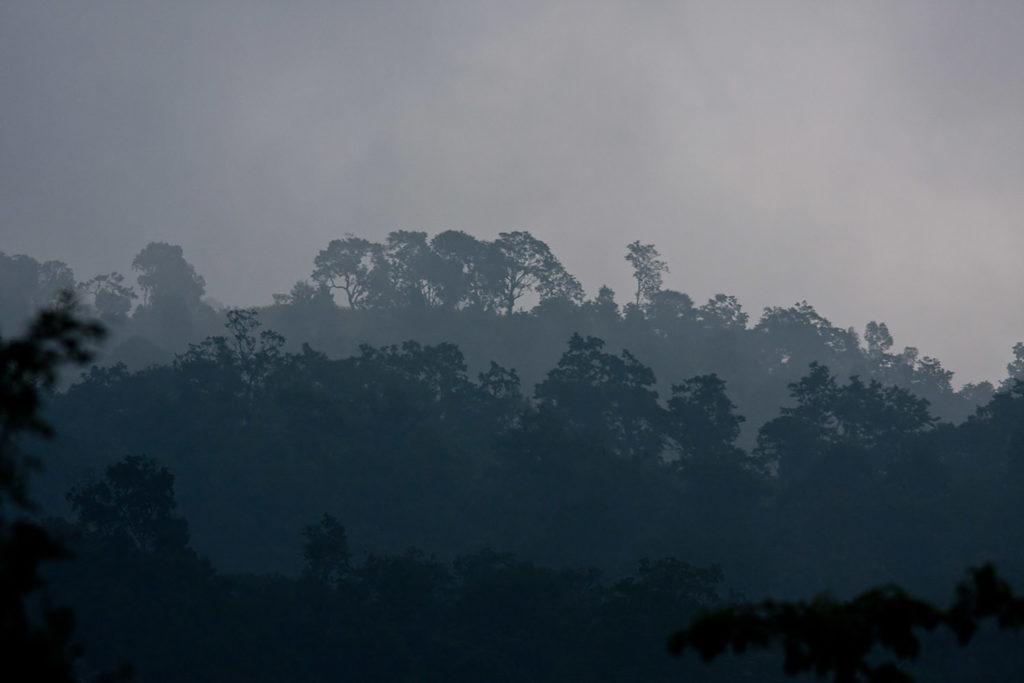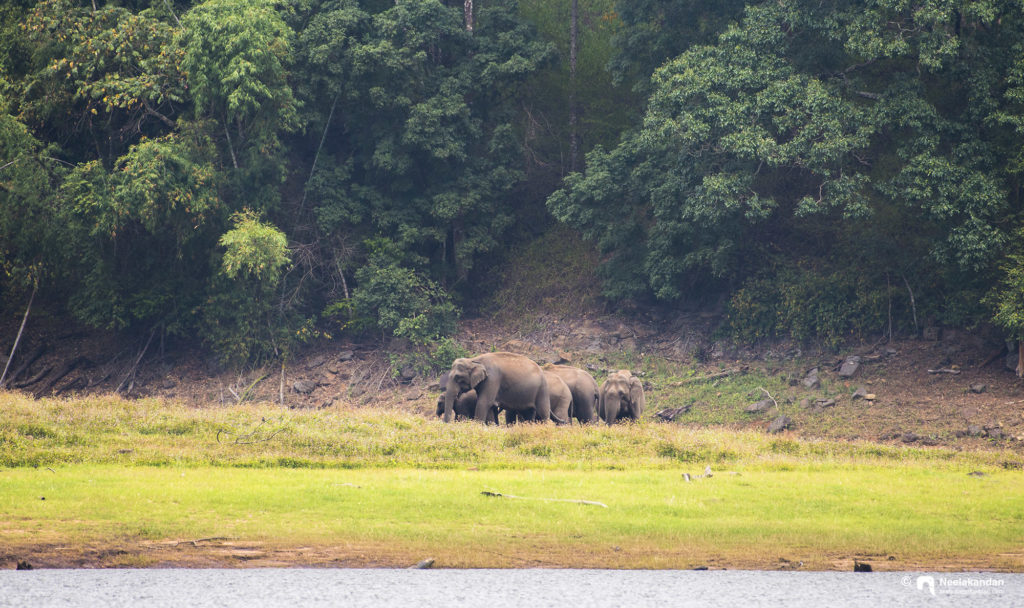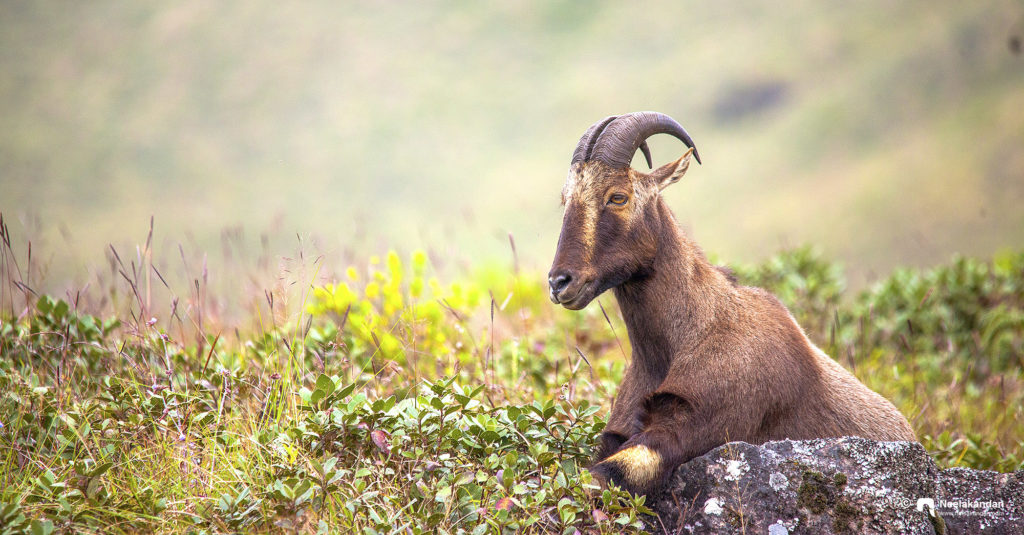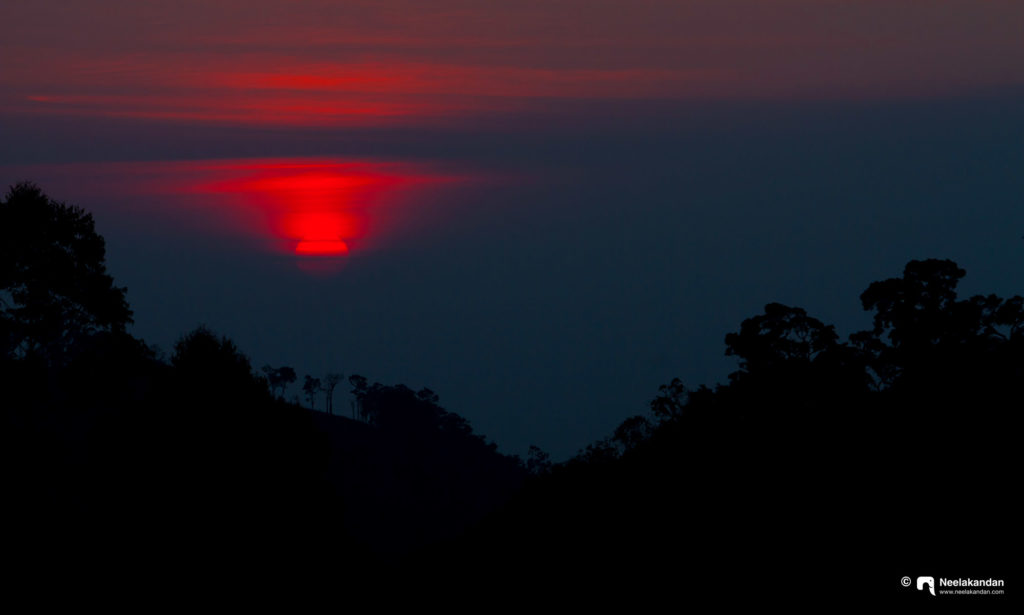Kerala, a lush green state situated in the south-west region of India, is very well known for its high human development and literacy rate which is much higher than the developed countries.
Kerala also is known as the God Own Country, is blessed with the flora and fauna that it possesses. Since Kerala is situated between the Arabian sea to the West and the Western Ghats towards the East, it gets an annual rainfall of 3107 mm, which allows the ecosystem to flourish to the maximum. Many endemic species of Birds, Mammals, reptile, etc… can be found in the evergreen, semi-evergreen, deciduous and dry forests of Kerala.
Maintenance of these ecosystems is very much important to keep the balance of nature, which is very well done by the Forest Department of Kerala by dividing the Forests in Kerala into 15 different Wildlife reserves and Sanctuaries. Below listed are the Wildlife Sanctuaries of Kerala.
1. Parambikulam Wildlife sanctuary (Tiger Reserve)
2. Periyar Wildlife sanctuary (Tiger Reserve)
3. Silent Valley National Park
4. Eravikulam National Park
5. Anamudi Shola National Park
6. Idduki Wildlife sanctuary
7. Chinnar Wildlife sanctuary
8. Peppara Wildlife sanctuary
9. Neyyar Wildlife sanctuary
10. Shenduruny Wildlife sanctuary
11. Aralam Wildlife Sanctuary
12. Muthanga Wildlife sanctuary
13. Thattekad Bird Sanctuary
14. Kadalundi Bird Sanctuary
15. Kumarakom Bird Sanctuary
1. Parambikulam Wildlife sanctuary (Tiger Reserve)
Ideal Visit: November – April
Parambikulam Wildlife Sanctuary is a 285 km² Protected area in Chittur taluk in Palakkad district of Kerala state, South India. Established in 1973, it is in the Sungam range of hills between the Anaimalai Hills and Nelliampathy Hills. The Western Ghats, Anamalai sub-cluster, including all of Parambikulam Wildlife Sanctuary, is under consideration by the UNESCO World Heritage Committee for selection as a World Heritage Site. The sanctuary is the home of 4 different tribes of indigenous peoples including the Kadar, Malasar, Muduvar and Mala Malasar settled in six colonies. Parambikulam Wildlife Sanctuary was declared as part of the 390.88 square kilometres (150.9 sq mi) Parambikulam Tiger Reserve on February 19, 2010.
The sanctuary is located from Palakkad town and adjacent to the Annamalai Wildlife Sanctuary to the east in Tamil Nadu. It is bordered to the north by Nemmara Forest Division, to the south by Vazhachal Forest Division and the west by Chalakudy Forest Division.
Altitude ranges between 300 m and 1438 m. There is a 600 m elevation opening through the Nelliampathy hills from Anamalai hills on the northern boundary of the sanctuary at Thoothampara. Major peaks in the sanctuary are Karimala (1438 m) in the southern boundary of the sanctuary, Pandaravarai (1290 m) in the north, Kuchimudi, Vengoli Malai (1120 m) in the eastern boundary and Puliyarapadam (1010 m) in the west.
The sanctuary has three man-made reservoirs; Parambikulam, Thunacadavu and Peruvaripallam, with a combined area of 20.66 km². The Thuvaiar waterfalls empty into one of the reservoirs. There are 7 major valleys and 3 major rivers, the Parambikulam, the Sholayar and the Thekkady. The Karappara river and Kuriarkutty river also drain the area. [ source: wiki]
2. Periyar Wildlife sanctuary (Tiger Reserve)
Ideal Visit: November – April
Periyar National Park and Wildlife Sanctuary is a protected area in the districts of Idukki and Pathanamthitta in Kerala, South India. It is notable as an elephant reserve and a tiger reserve. The protected area covers an area of 925 km2. 350 km2 of the core zone was declared as the Periyar National Park in 1982.
The park is often called the Periyar Wildlife Sanctuary. It is also referred to by the name “Thekkady”. It is set high in the Cardamom Hills and Pandalam Hills of the southern Western Ghats along the border with Tamil Nadu state. The park is located 4 km from Kumily, approximately 100 km east of Kottayam and 120 km southeast of Kochi.
Periyar National Park is known for its elephants. Altogether 62 different kinds of mammals have been recorded in Periyar, including many threatened ones. Periyar is a highly protected tiger reserve and elephant reserve. There are an estimated 53 tigers (2010) in the reserve. Tourists also come here to view the Indian elephants in the act of ablution and playfulness by the Periyar lake. The elephant number around 900 to 1000 individuals. Other mammals found here include gaur, Bison, sambar (horse deer), barking deer, mouse deer, Dholes (Indian wild dogs), mongoose, foxes and leopards. Also inhabiting the park, though rarely seen, are the elusive Nilgiri tahr. Four species of primates are found at Periyar – the rare lion-tailed macaque, the Nilgiri Langur, the common langur, and the Bonnet Macaque. [source: wiki]
3. Silent Valley National Park
Ideal Visit: August – February
Silent Valley National Park is located in the Nilgiri Hills, Palakkad District in Kerala, South India. The area in this national park was historically explored in 1847 by the botanist Robert Wight and is associated with Hindu legend. The park is one of the last undisturbed tracts of South Western Ghats montane rain forests and tropical moist evergreen forest in India. Contiguous with the proposed Karimpuzha National Park to the north and Mukurthi National Park to the north-east, it is the core of the Nilgiri International Biosphere Reserve and is part of the Western Ghats World Heritage Site, Nilgiri sub-cluster under consideration by UNESCO.
There are at least 34 species of mammals at Silent Valley including the threatened Lion-tailed Macaque, Niligiri Langur, Malabar Giant Squirrel, Nilgiri Tahr, Peshwa’s Bat (Myotis peshwa) and Hairy-winged Bat. There are nine species of bats, rats and mice.
16 bird species in Silent Valley as threatened or restricted: Nilgiri Wood-pigeon, Malabar Parakeet, Grey-headed Bulbul, Broad-tailed Grassbird, Rufous Babbler, Wynand Laughing Thrush, Nilgiri Laughing Thrush, White-bellied Shortwing. [source: wiki]
4. Eravikulam National Park
Closed from: February – April
The misty hills of Eravikulam National Park is at an elevation of about 2,000 m. The terrain consists of high altitude grasslands interspersed with sholas. Anamudi, the highest peak in India south of the Himalayas is inside this park. Many perennial streams criss-cross the park.
Twenty-six species of mammals have been recorded in the park including the largest surviving population of Nilgiri Tahr, estimated at 750 in number. The other ungulates are Gaur, Indian Muntjac and Sambar Deer. Golden Jackal, Jungle Cat, Wild dog, Dhole, leopard and tiger are the main predators. Some little known animals such as Nilgiri langur, Stripe-necked Mongoose, Indian Porcupine, Nilgiri Marten, small-clawed otter, Ruddy Mongoose, and Dusky striped squirrel are also found.
Some of the endemic and rare species of birds like the Black & Orange Flycatcher, Nilgiri flycatcher, Grey-headed canary flycatcher, White-bellied shortwing, Kerala Laughingthrush, Black bulbul etc. can be found in great abundance.
5. Neyyar Wildlife Sanctuary
Ideal Visit: November – March
The Neyyar Wildlife Sanctuary covers a total area of 128 km2. This is the drainage basin for the Neyyar River and its tributaries – Mullayar and Kallar. The towering peak of Agasthyamalai at an elevation of 1868 meters is a very prominent landmark.
The mean summer temperature is around 35 degrees Celsius and the winter is around 16 degree Celsius. The average rainfall from the Southwest monsoon between May and July and the Northeast monsoon between October and November is about 2800 mm.
This sanctuary has a substantial natural vegetation cover. The diversity of its flora makes the sanctuary an ideal gene pool preserve. There are 39 species of mammals, including Tiger, Leopard, Sloth bear, Elephant, Sambar, Barking deer, Bonnet macaque and Nilgiri Langur. 176 species of birds, 30 species of reptiles, 17 species of amphibians and 40 species of fishes are reported from the sanctuary. A Crocodile farm, set up in 1977 at Neyyar, is home to 44 mugger crocodiles. The Steve Irwin Crocodile Rehabilitation and Research Centre was inaugurated at Neyyar Wildlife Sanctuary in May 2007. [source: wiki]
6. Peechi – Vazhani Wildlife Sanctuary
Ideal Visit: November – March
Peechi-Vazhani Wildlife Sanctuary is a wildlife sanctuary headquartered in Peechi, Thrissur District of Kerala, India. The sanctuary consists of Palappilly- Nelliyampathy forests including the area of Chimmony Wildlife sanctuary. Temperature varies from 15º to 38ºC. The hottest period is March – April and the coolest period is Dec- January. Annual average rainfall of 3000 mm is recorded here.
Forest Types include Tropical Evergreen Forests, Tropical Semi-evergreen forests, Moist Deciduous forests etc. There are 39 species of mammals, 176 sp. of birds, 30 species of reptiles, 17 species of amphibians and 40 species of fishes are reported from the sanctuary. The common found are Tiger, Leopard, sloth bear, Elephant, sambar, barking deer, bonnet macaque, Nilgiri langur, slender loris, porcupine etc.
7. Wayanad Wildlife Sanctuary
Wayanad Wildlife Sanctuary is an animal sanctuary in Wayanad, Kerala, South India. It is the second-largest wildlife sanctuary in Kerala. It is bestowed with lush green forests and rich wildlife. Also known as the Muthanga Wildlife Sanctuary, this wildlife area houses some of the rare and endangered species of both flora and fauna.
Wayanad climate is salubrious. Average rainfall in this district is 2322 m.m. Annual rainfall in these high rainfall areas ranges from 3,000 to 4,000m.m. High-velocity winds are common during the south-west monsoon and dry winds blow in March–April. High altitude regions experience severe cold.
Elephants, tigers, panthers, jungle cats, civet cats, monkeys, wild dogs, gaur, deer, bears, monitor lizards and a variety of snakes are seen in this sanctuary.
8. Idukki Wildlife Sanctuary
A land-locked district, Idukki is one of the most nature-rich areas of Kerala. The Idukki Wildlife Sanctuary here spreads over an area of 77 sq km in the Thodupuzha and Udumpanchola taluks of the district. Situated at an altitude of 450-748 m above sea level, this sanctuary occupies the forest land between the Cheruthoni and Periyar rivers. There is a scenic lake around the sanctuary, covered by an enchanting canopy of tropical ever-green and deciduous trees, and offers boat rides.
Elephants, bison, sambar deer, wild dogs, jungle cats, tiger, wild boar etc. are seen here apart from various species of snakes including cobra, viper, kraits and numerous non-poisonous ones. Birds include grey jungle fowl, Malabar grey hornbill, several species of woodpeckers, bulbuls, flycatchers, etc. The wildlife here is similar to that of Thekkady. This sanctuary lies adjacent to the world-renowned Idukki Arch Dam. [source: kerala tourism]
9. Peppara Wildlife Sanctuary
The Peppara Wildlife Sanctuary constitutes the catchments of the Peppara Dam on the Karamana River. The area is hilly, with elevation varying from 100 metres to 1,717 metres. The major peaks in the sanctuary are Chemmunjimottai, Athirumalai, Arumukhamkunnu, Koviltherimalai and Nachiyadikunnu. The annual average rainfall is 2,500 millimetres. The major rivers are Karamana River and its tributaries.
Forest types include West coast tropical evergreen, Southern hilltop tropical evergreen, West cast semi-evergreen, Southern moist mixed deciduous forest, Myristica swamp forest, sub-montane hill valley swamp forest etc. The sanctuary has a rich population of mammalian fauna and is emerging as a big attraction to wildlife enthusiasts and ornithologists. 43 species of mammals, 233 species of birds, 46 species of reptiles, 13 species of amphibians and 27 species of fishes are reported from the sanctuary.
10. Thattekkad Bird Sanctuary
Thattekkad Bird Sanctuary is located in Kothamangalam Taluk of Ernakulam district on the northern banks of the Periyar river. At the height of 35-523m above the sea level, this marvellous bird sanctuary is situated at Njayqapilli peak. 13 km northeast of Kotyhamangalam, Thattekkad Bird Sanctuary is home to some of the rarest species of birds in India.
Spread across 25 sq. km. the sanctuary lies between the tributaries of the River Periyar like a peninsula. Rare birds like the Crimson-Throated Barbet, Bee-eater, Sunbird, Shrike, Black-winged Kite, Grey Heron and the Night Heron are also commonly sighted. Indian roller, cuckoo, common snipe, crow pheasant, jungle nightjar, kite, grey drongo, Malabar trogon, woodpeckers, large pied wagtail, baya sparrow, grey jungle fowl, Indian hill myna, robin bird, jungle babbler and darter are some of the common birds found here.
There are a few rare birds as well which include: sunbird, shrike, fairy blue-bird, grey-headed fishing eagle, etc.
Thattekkad Bird sanctuary experiences a tropical climate. The annual rainfall recorded here is around 3000mm. The weather remains pleasant throughout the year while monsoon hits this place in the months between May and July. It would not be recommendable to visit this park during monsoon as most of the area here becomes inaccessible.
11. Shendurney Wildlife Sanctuary
Shendurney Wildlife Sanctuary is a protected area in the Western Ghats, India. It was established in 1984 and comprises 171 square kilometres.
Shendurney Wildlife Sanctuary, part of Agasthyamalai Biosphere Reserve, is one of the richest areas of biodiversity in the Western Ghats. The biotic richness and distinct biographic features of this forest area make it an ideal gene pool reserve. The etymological meaning of the name “Shendurney” has been derived from a tree locally called ‘Chenkurinji’ or ‘Chenkurunji’ (Gluta travancorica), which is an endemic tree confined to this tract.
Shendurney Wildlife Sanctuary has substantial natural vegetation ranging from southern secondary moist mixed deciduous forest to southern subtropical hill forest. Tropical evergreen and semi-evergreen forest comprise three fourth of the total area of the sanctuary. The undulating terrains, rocky mountains, waterfalls, grasslands etc. form the habitat of a variety of tropical flora and fauna. The construction of the Parappar dam has resulted in the creation of an artificial lake of about 18.69 sq.km within the sanctuary. Before the formation of ‘Shendurney’ as a wildlife sanctuary, the area was under Thenmala Forest Division. The sanctuary is located in Kollam District and comes under the control of Agasthyavanam Biological Park Circle.
12. Chinnar Wildlife Sanctuary
In the rain shadow area of the western ghats of Kerala is the Chinnar wildlife sanctuary. The Chinnar River and Pambar rivers are the major perennial water resources in the sanctuary. The Chinnar originates near Kumarikal Malai, follows the interstate boundary along the northwest edge of the sanctuary for 18 km and becomes the Amaravati River in Tamil Nadu.
34 species of mammals live here, including many Panthers and Spotted deer, Indian Elephants, Gaur, Tigers, Sambar Deer, Common langur, Bonnet Macaque, Hanuman monkey, vulnerable Rusty-spotted Cats and about 240 of the only vulnerable Grizzled Giant Squirrels in Kerala. 245 species of birds including Yellow-throated Bulbuls. 52 species of reptiles including 29 species of snakes, Indian Star Tortoise and the largest population of vulnerable Mugger Crocodiles in Kerala live in the Sanctuary. Most common of the 42 species of fishes observed in the Chinnar and Pambar rivers are Garra mullya minnows, River-carp baril, Giant Danio and the endangered hill stream game fish Deccan Mahseer. 22 amphibian species live in the Sanctuary. There are 156 species of butterflies.
13. Chimmony Wildlife Sanctuary
Chimmony Wildlife sanctuary is situated in Mukundapuram Taluk of Thrissur District, of Kerala state, in India. The sanctuary with an area of about 85.067 km2 is on the Western slopes of the Nelliyampathi hills. The highest peak in the sanctuary is Punda peak. Along with the neighbouring Peechi-Vazhani Wildlife Sanctuary, it forms a continuous protected area of 210 km2. It also lies just west of Parambikulam Wildlife Sanctuary, providing some habitat connectivity with the forests of that relatively large protected area. The Chimmony river and its tributaries have created a topography unique to this region. The forests here are tropical evergreen, semi-evergreen forest|semi-evergreen and the moist deciduous forests.
14. Silent Valley National Park
Silent Valley National Park is one of the last undisturbed tracts of South Western Ghats montane rain forests and tropical moist evergreen forest in India. The Silent Valley National Park is a unique preserve of natural rainforests. Within an area of 237. 52 Sq.km, it houses a rich mosaic of varied habitats. Out of these springs, the amazing variety of life forms some of them endemic to the Western Ghats.
The Valley exudes a quiet grandeur, a mystery half-revealed and half-concealed that is part of a story older than mankind, for this rainforest probably dates back to 50 million years. Silently she beckons us to witness the marvellous exuberance of life that expresses itself in incredible chaos of plants and animals and birds and insects. At the heart of her many songs is a still, deep silence which only those who tread softly and wait patiently may learn to hear.
15. Aralam Wildlife Sanctuary
Situated in the northernmost part of Kerala is the Aralam Wildlife Sanctuary, covering 55 km2 ok full-fledged Flaura and Fauna. The elevation varies from 50m to 1145m and the highest peak is Katti Betta, which is 1145m high. An Anual rainfall of 3,000 mm has been recorded in the sanctuary. The sanctuary area falls in Aralam, Kelakam and Kottiyoor revenue villages and is located in the Northwest slopes of the Western Ghats contiguous with the forests of Coorg (Kodagu) district of Karnataka state.
Different kinds of deer, boar, elephant, and bison are quite common. Leopard, jungle cat and various types of squirrels are reported.
16. Pampadum Shola National Park
Pampadum Shola National Park is the smallest national park in Kerala state. The park is administered by the Kerala Department of Forests and Wildlife, Munnar Wildlife Division, together with the nearby Mathikettan Shola National Park, Eravikulam National Park, Anamudi Shola National Park, Chinnar Wildlife Sanctuary and the Kurinjimala Sanctuary.
The park protects a moderate amount of montane evergreen shola forest that is associated with the wildlife-rich Eravikulam National Park. The keystone species here is the highly elusive and endangered, endemic small carnivore – the Nilgiri Marten. Leopards and Indian wild dogs are sometimes sighted at dusk or dawn. The Old Kodaikanal–Munnar Road nearby is closed due to the growing population of Wildlife such as Elephants, Buffaloes Gaur and Black Monkeys.
Some notable birds found here include the Nilgiri Wood-pigeon, White-bellied Shortwing, Scaly-breasted Lorikeet, Blue Rock-thrush, Blue-capped Rock-thrush and Nilgiri flycatcher, and Black-and-orange Flycatchers.
17. Mathikettan Shola National Park
Mathikettan Shola National Park is a 12.82 km² national park in Poopara village of Udumbanchola taluk in Idukki district of Kerala. The name Mathikettan derives from the Tamil word meaning ‘mind confuser’, as the local people say that one forgets the path once he enters into the park. Mathikettan Shola can be approached from Poopara via Munnar, on the Munnar – Kumily Highway.
18. Anamudi Shola National Park
Anamudi Shola National Park is a protected area located along the Western Ghats in Idukki District of Kerala. It is composed of Mannavan shola, Idivara shola and Pullardi shola, covering a total area of around 7.5 km². Elevation ranges from 2,152 meters. This park is a very high rainfall area with an annual average rainfall of about 4,500 millimetres.
19. Mangalavanam Bird Sanctuary
Mangalavanam is an ecologically sensitive area situated at the centre of Cochin city. It is situated behind the Kerala High Court building. It is a nesting ground for a large variety of migratory birds and supports many types of mangroves. The Managalavanam is often regarded as the “green lung of Kochi”, considering its role in keeping the city’s air pollution under check. An area is a roosting place for many kinds of resident and migratory birds.
Recently the high-rise buildings in the nearby area are curtailing the movement of birds in the sanctuary. The buildings close to the sanctuary interrupt proper orientation, take-off and landings of the birds. They also cause hurdles in the regular movements of the nesting birds in transporting nesting materials. It is also likely to hinder the movement of birds while bringing food materials to the chicks and fledgelings. The administrative control of the sanctuary is with the Assistant Conservator of Forest and Wildlife Warden Mangalavanam Bird Sanctuary of Nature Study Centre Kalady and then to the Range Officer Research Range Kodanad.






There are no comments